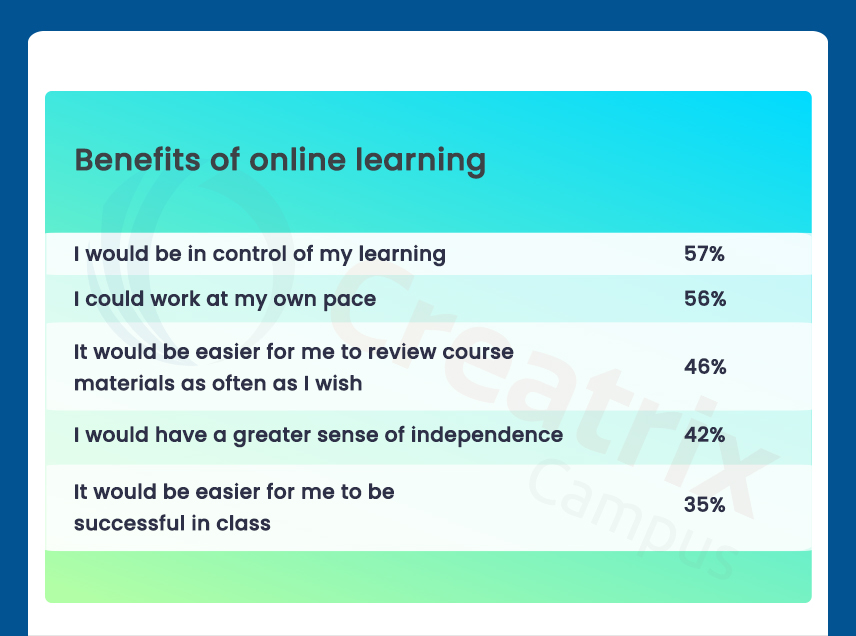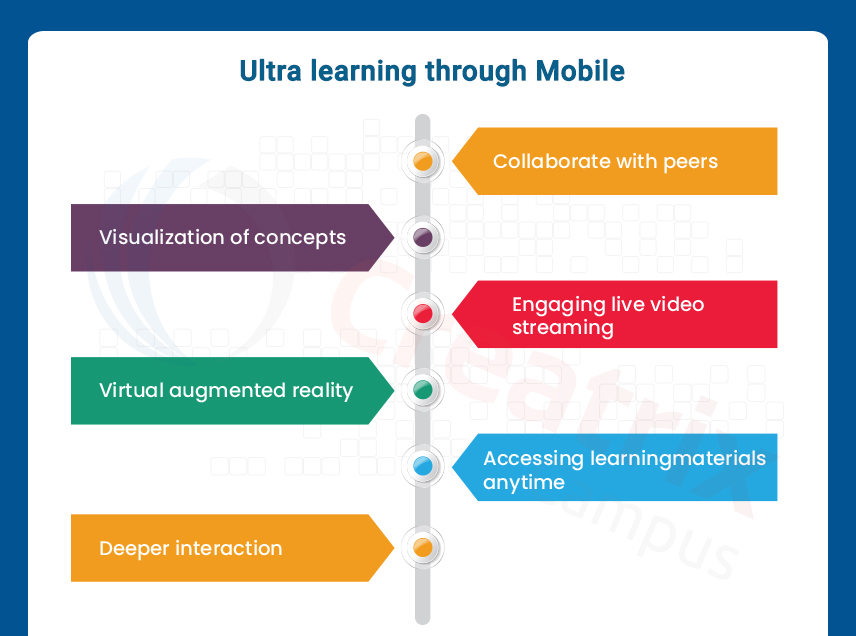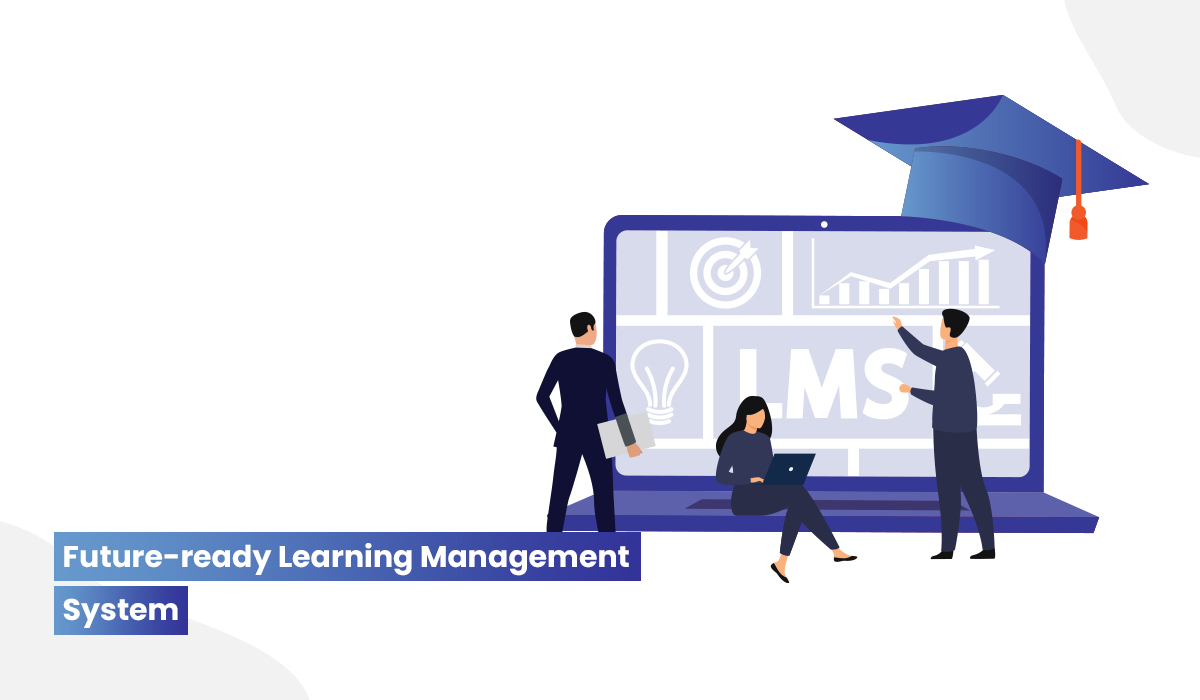Educational technology and mobile learning—how mobile-assisted learning tools transform education?

The future of mobile learning has never shown signs of slowing down. Thanks to the blend of educational technology and mobile learning, that’s resulted in a range of mobile-assisted learning tools.
According to a Project Tomorrow Speak Up Survey, the faculty sees a lot of positive impact on students from the use of online learning tools. A bunch of 52% confirms that their students show interest to learn, 36% of faculty affirm that students develop creativity, 29% of them agree that the e-learning tools encourage critical thinking and problem solving, and the others report that students take complete ownership of their learning, and they start applying knowledge to practical problems.
Let’s discuss how mobile assists learners in transforming their education. We have figured out ….. ways by which this happens in a higher education campus.
Student-Faculty Engagement
With their most favorite device in hand that fosters constant student-faculty interaction, what else would a student prefer? Reports have constantly exhibited positive learning impact from students using digital technologies or Learning Management Systems (LMS). They get more interactive with tools like inbuilt quizzes, discussion forums, and activity walls.
Go wherever the students go
The one way to connect and engage with your students is by getting into their smartphones. Today’s millennials are permeated by their smartphones than their desktop computers or tablet.
Students prefer to enroll in institutions that offer them mobile apps. They find it easier to self-register for courses, check schedules, access resources, take up assessments, and make fee payments, all by themselves.
24/7 virtual learning
Learning apps bring virtual classroom training into the students’ favorite mobile devices with a wide variety of web conferencing tools that allow them to casually collaborate, get on group meetings, sub-chats, or group chats. You see an increased learner engagement in the form of information sharing, instant messaging, clarification through Question and Answer, and take part in ad-hoc meetings and polling.
Students even get to advance their learning by uploading audio/video/PDF contents and share with everyone in an instant. The best part of mobile learning is that students take part in LIVE sessions, interact, take up assessments live, auto evaluate through the preset questions with correct answers.
Gamification
Present-day students look for something new to their learning experiences and mobile learning gives them this opportunity. Gamification in mobile motivates students to stay on their tasks. With group boards and leaderboards that give them the opportunity to gain rewards when they achieve their milestone, students take up learning in a more interesting way.
They become masters of their own learning by handling tasks and projects on their phone, track the submission rates, badges and scores. Educational technology with gamification elements can add fun to learning and motivates them to become better learners.
Fosters personalized self-learning experience
There is no doubt that the mobile way of online learning paves way for personalized learning interest. Today’s digital learners value the benefits of online learning. To them, it acts as a mechanism for personalizing their learning experience.
According to a study conducted - From Chalkboards to Tablets, 57 percent of students confirm that they take complete control of their learning and work in their own space. Another 46 percent of them prefer to review their course materials as and when they prefer and 42 percent say that mobile learning gives them a greater sense of independence than traditional classroom learning.

The Mobile LMS creates a self-learning environment with online assessments and quizzes, giving students the opportunity to self-reflect. With threshold values set, students can easily track progress to the next level. They also learn their course performance every now and then based on the intuitively designed personalized dashboards that give them a hang of real-time display of their current, past, and future course progresses, with options to track the pending tasks.
Ultimate learning takes place

The mobile way of learning triggers an ultimate learning experience that transforms the learning process. With emerging mobile technology, social media, and digitally rich content, students tend to be more successful by,
- Collaborating with peers on real-world problems
- Use animations and simulations to visualize various concepts
- Use a mobile device to involve in live video streaming for engaging interaction
- video science lessons to review later
- Understanding the context of learning through a virtual or augmented reality environment
- Accessing learning materials through a mobile device, share, and exchange
- Discuss with faculty and peers through various ways online
Easy assessment of learning materials, assessments, and assignments
With e-learning applications and their mobile apps, students can get instant access to their learning resources from wherever they are. Faculty can design assessments of all kinds including short answers, long answers, MCQs, Match the following, and much more.
Students in turn complete them in real-time and submit them in no time. The best part is, they get to view their grades with instant personalized feedback.
Differentiated Instruction
With mobile learning, differentiated instruction is made possible to students.
Faculty can have multiple ways to cater to the needs of different learners according to their competencies. The learning materials, assignments, assessments can be curated based on the specific needs of the learners through software programs and mobile applications.
Better Communication
Elearning tools these days come with advanced features for effective communication. Through emails, text messaging, or chat options, faculty have complete control of communicating with students and their parents.
In no time they send notifications and reminders about pending homework assignments, progress reports, meetings, etc. This increased level of communication helps both the students stay informed about their children’s progress in studies and of their performance.
Advantages and Disadvantages of Mobile Learning
Besides what we discussed above, here are some additional advantages of mobile learning;
- Better completion rates and higher retention
- Augmented Reality
- Data-Driven Learning
- Flipped Learning
- Gamification
- Language Learning
- Virtual Reality
- Collaborative learning
- Higher level of engagement
- Anytime, anywhere access
- Builds student responsiveness
- Mobile learning covers a huge distance
- Allows uses to access a variety of content
- Learning path
- Motivates and encourages students
- Assessments followed by instant personalized feedback
Disadvantages of Mobile Learning
- Mobile learning also comes with few disadvantages. We have discussed a few here:
- Software compatibility issues, without no automatic upgrade or regular system, crashes that might hinder the interrupt a smooth mobile learning experience.
- Hardware issues or wearing out due to overuse, dust, using the device roughly, etc.
- Distraction leading to using social media websites, chatting, sharing pictures, or playing video games.
- Misuse of device.
- Lack of internet connection or electricity.
Conclusion - The need for a Mobile App
With more and more Elearning opportunities flooding, institutions are forced to develop in-house mobile apps to stay in trend. Trust us, but having just a mobile app is not the end of everything. Elearning Apps should be expressly designed with the best-of-breed ideas and practices, special to the higher education sector.
It should promote two-way communication, rather than just be a notification mechanism. The best part is, it trickles down to the app experience! Students tend to not using the app if it’s boring, unpleasant, or irritating. Reports confirm that a quarter percent of 100 users disown an app after one use, and a three fourth of them use it less than 10 times.
These factors should be considered while designing a mobile app for higher education users.
Creatrix Mobile App
Creatrix platform’s Mobile App delivers solutions or higher education’s institutional excellence, student management, teaching and learning that helps institutions improve the experience, reduce the cost of operations, and automate processes within Higher Education.
At Creatrix team we believe that the mobile app is an amazing way to engage and outreach with the stakeholders, especially with the millennials during the Covid times. Our mobile app platform helps to connect with students and makes learning a leisure.
No matter if you are running a large university, our mobile app is built on ios & android and supports high-volume activity, event capture, tracking, and execution. The app is highly configurable that can match needs of your institutional requirement with a wide range of desired tools, features, custom fields, and various permission settings.
It’s easy to set up and helps you serve and engage your students like never before. The insightful dashboards gives instant view of syllabus, schedules, assessments, assignments, grade book, with other alerts and notification on community participation, poll responses, resources uploads, etc.
We have only given you a glimpse of what Creatrix mobile technology can do for Higher Ed. A decade old now, we are proud to claim that we are one of the thought-leaders in this field. Write to us to know how to integrate with your institution’s mobile communications strategy, so you can efficiently engage with future, current, and existing students.



